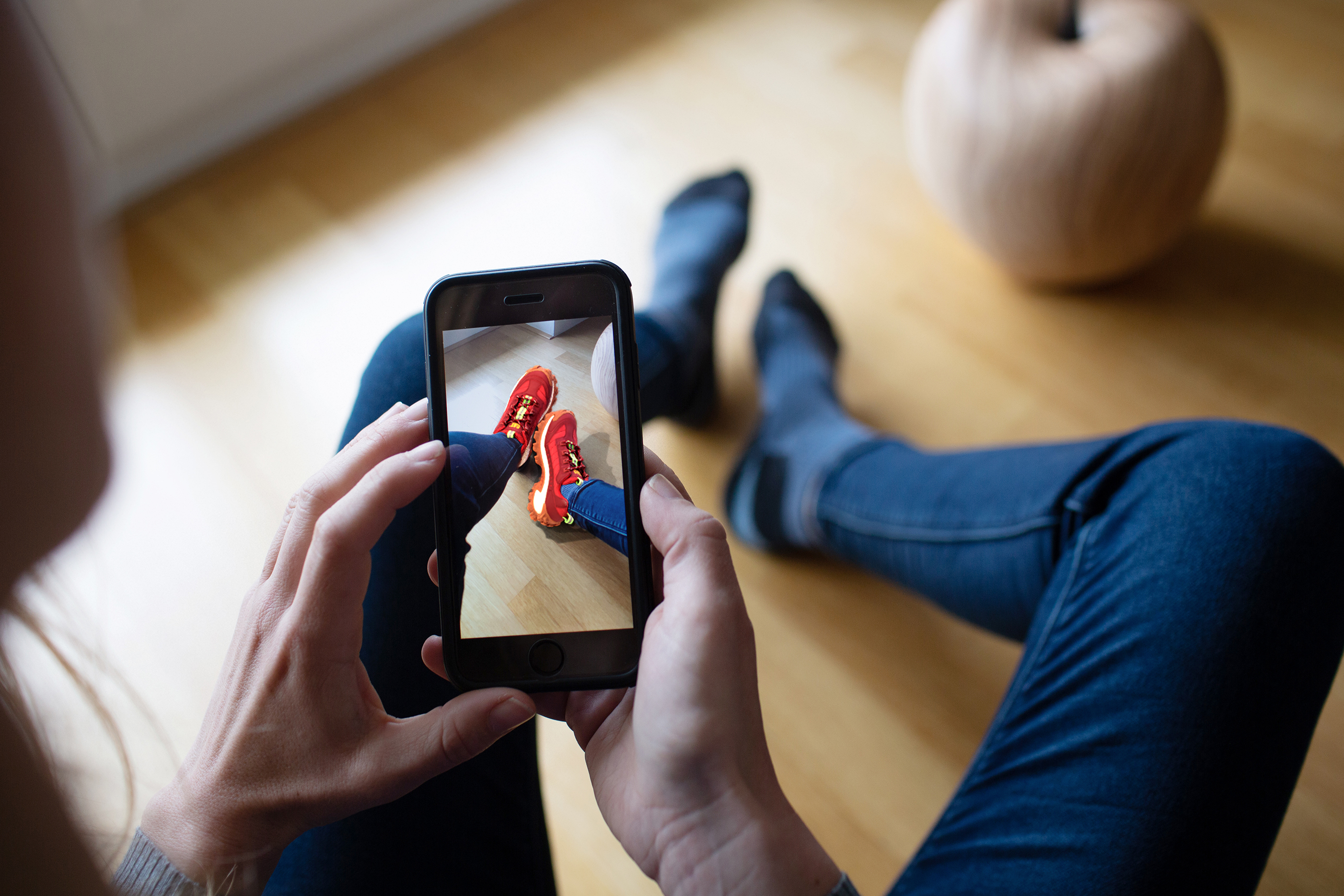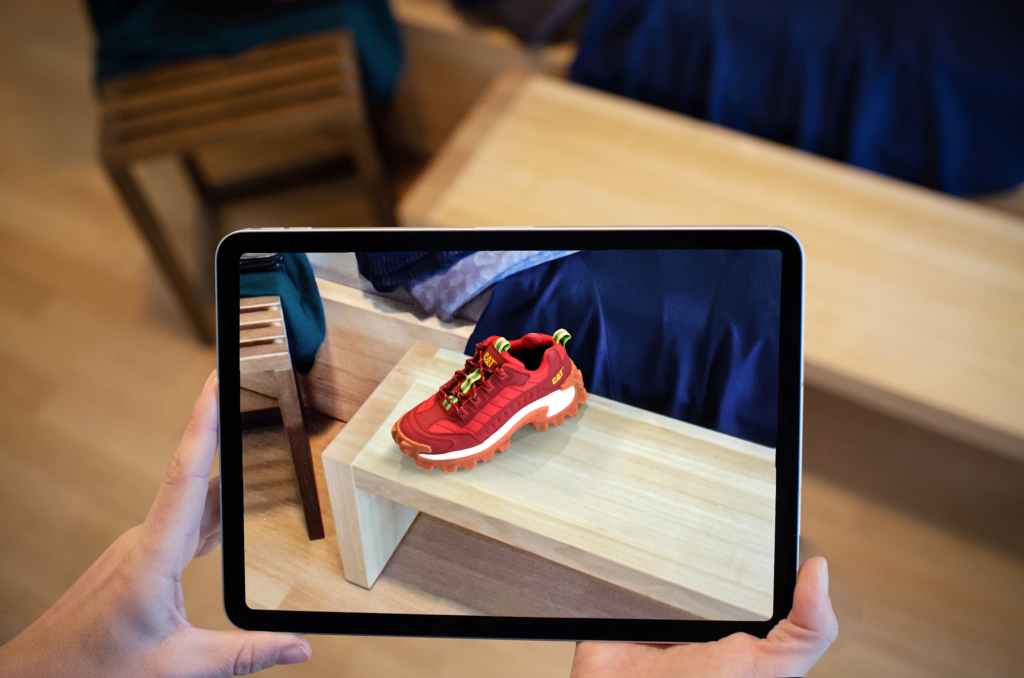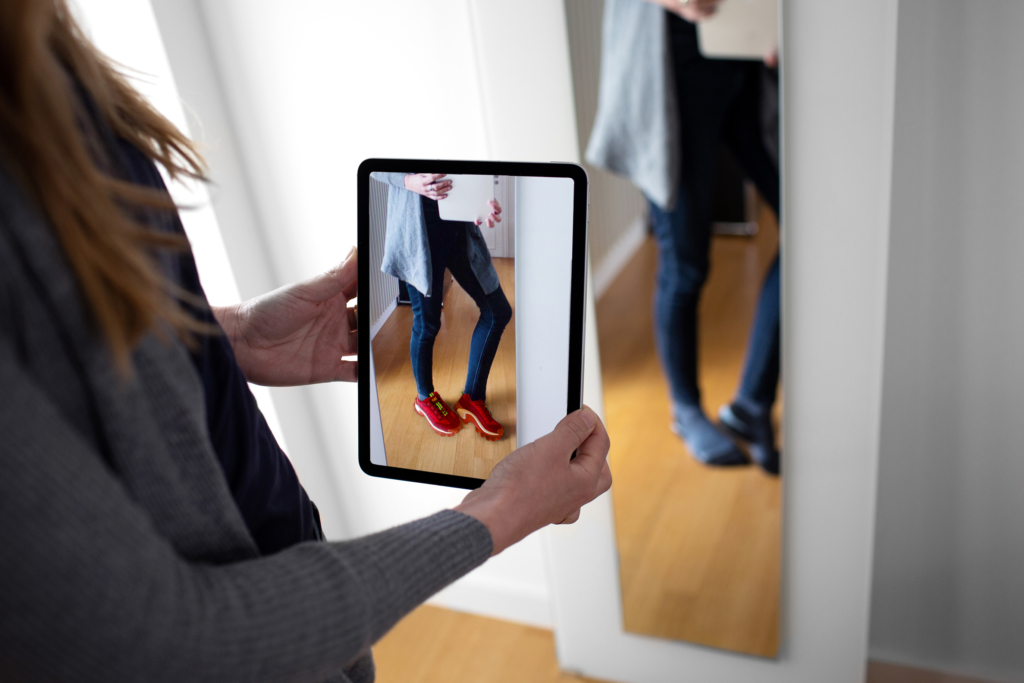
Augmented Reality and Shoes: a Brave New World of Shopping
The boundaries between online and offline shopping are becoming more and more blurred due to Augmented Reality.
Returns are the dark side of online shopping. Annoying for customers, harmful to the environment and expensive for retailers, they spoil online shopping fun. The undisputed leader in returns statistics is still the shoe segment. But what, for example, should a fashion-conscious customer do in online shopping to find the absolutely perfect shoes for a new dress? Correct. Order five alternatives and send four back later. Everyone agrees: this orgy of returns must come to an end. And, Augmented Reality offers the solution.
Augmented Reality brings that shoe store feeling into your home

How does Augmented Reality influence our shopping behavior?
But how can that be achieved? From our point of view, the answer is clear: the various shoe models can be perfectly assessed before they are bought by placing them as a virtual object directly next to the dress or next to the trousers. And this feature is not a dream of the future.
This is exactly what Augmented Reality is already capable of in online shopping. This feature not only facilitates the assessment and increases enthusiasm – and that even before the purchase is made – but, according to the behavioral economists, also increases personal involvement and the perception of the value of the product. Incidentally, the latter also means that the customer is willing to spend more on the product. Augmented Reality in online shops ensures significantly more sales with minimal effort.
Is this expensive or complex?
And to all online retailers who are now wondering what technological hurdles they are facing through Augmented Reality: neither the customer nor the retailer need any software or complex additional systems for this feature. Modern smartphones can do this without an app and Augmented Reality objects can be integrated into almost all shop systems without any problems and without programming.

Virtual try-on is the new magic word and is just in the starting blocks. We can finally put on clothes virtually before we buy them online.
How will these technologies evolve in the near future?
The possibilities of the products’ digital copy once created are much wider. Functions such as a the so-called virtual try-on are already in the starting blocks. This allows virtual twin shoes to be projected onto your own feet. Quickly put on the new dress or jeans, and the entire outfit can be stylishly combined and varied.
For manufacturers and retailers, the new AR powered shopping offers the opportunity to present their products in an even more exciting, attractive and individual way and to sustainably reduce the annoying returns. And since the financial and temporal expenditure of the 3D capture is actually pleasantly manageable, medium-sized manufacturers and dealers in particular can gain a clear competitive advantage with this innovative bundle of technologies.
What does this mean for online retailers today?
As often since the Internet emerged the rule to be quick applies here.. Today, therefore, there is no argument for any manufacturer or retailer – regardless of whether they are small, medium or large – to wait here.
What does it cost?
Shouldn’t your customers be able to explore your products like this? Please see for prices of our scanning service on your behalf or for a 3D scanning system onsite:
Which devices are supported?
You don’t need an app anymore to view AR models. By now the technology has been deeply integrated into the mobile operating systems iOS and Android as both Google and Apple see the enormous potential.
As the result more than two billion smartphones have this capability at present (May 2021). And on your side you don’t have to do more than add a normal link to your online shop or website; no initial investment, no software development.
iOS/Apple
AR requires an iOS or iPadOS device with iOS 11 (or later) and an A9 processor or later; in detail:
– iPhone 6S or later
– iPad Pro (all models)
– iPad (5th generation) or later
– iPad mini (5th generation) or later
– iPad Air (3rd generation) or later
– iPod touch (7th generation) or later
Android/Google
AR usually requires Android 7.0 or later. The capable devices can be found at google.com. This list is continuously updated by Google:




